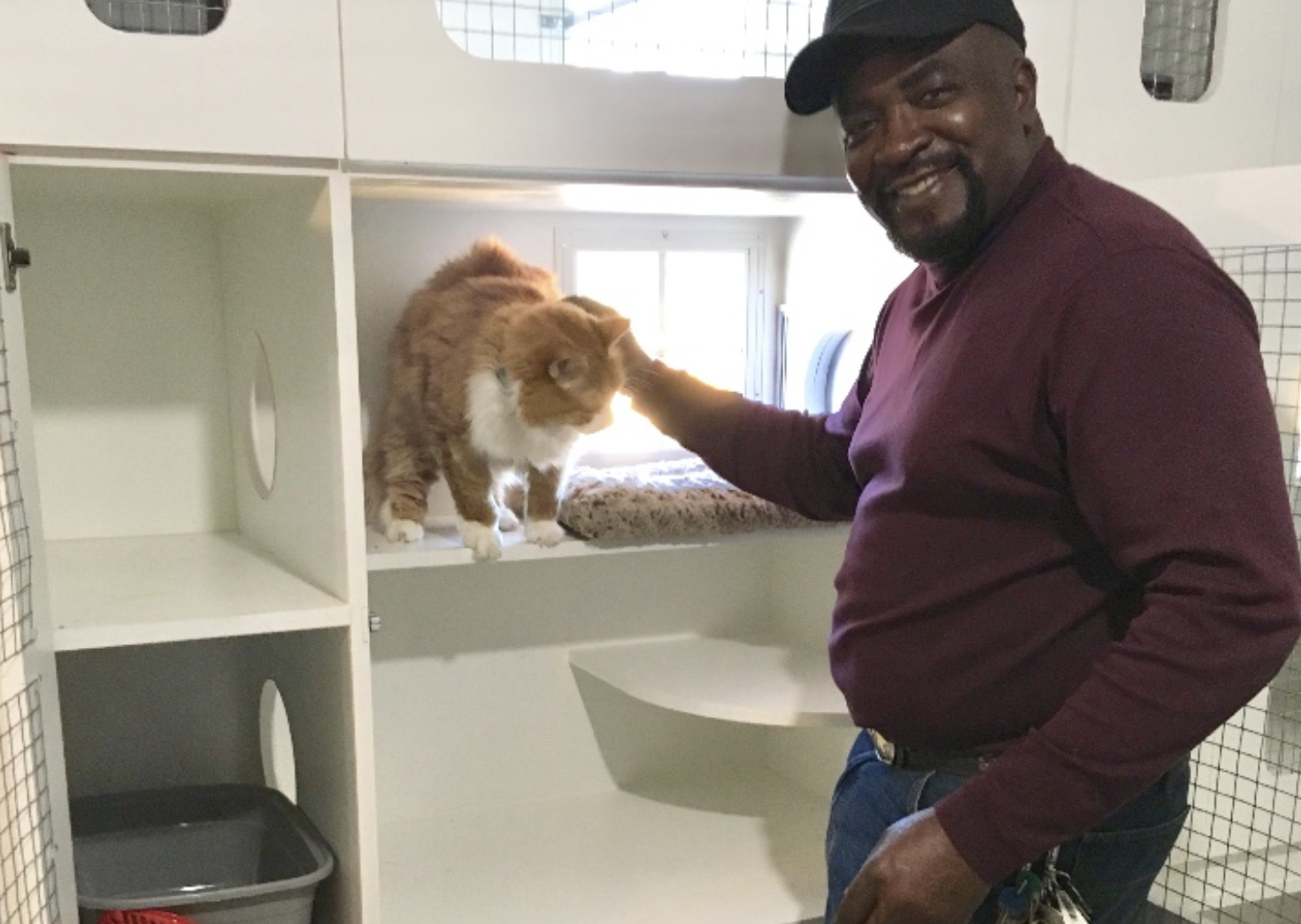Artificial intelligence (AI) is revolutionizing industries worldwide, and pet care is no exception.
From enhancing health monitoring to improving training techniques, AI is making pet care more efficient, personalized, and effective. For pet-care businesses and pet parents alike, understanding the impact of AI on pet care and management can unlock new opportunities for innovation and improvement.
This post explores the basics of AI, how this technology is transforming pet care, and how you can leverage these advancements to enhance your services.
What is artificial intelligence (AI)?
Artificial intelligence (AI) refers to machines that are programmed to think like humans, simulating human intelligence. This is a broad term for the many types of AI tools and technology on the market today.
ChatGPT, perhaps one of the most recognizable names in artificial intelligence, is an AI chatbot that garners more than 5 billion website visits per month. It’s a type of generative AI, which can create content like text, images, audio, and more. But generative AI isn’t the only innovation taking the world by storm, and pet-care businesses can embrace different types of machine learning to optimize their business practices.
AI tools have advanced rapidly over the last few years, and their popularity has increased as well. Here are a few examples of how pet-care businesses are already using AI, which we’ll explore in more detail later in this post:
- Wearable health monitoring devices
- AI-controlled smart feeders
- Interactive smart toys that respond to pets’ behavior
- Virtual vet consultations, powered by AI triaging
What are the benefits of using AI for pet care businesses?
Implementing AI technology can offer many benefits to pet care businesses like yours, including:

- Personalization on a large scale. Tools like AI chatbots can provide one-on-one, personalized customer assistance, answering questions, booking appointments, and more. Additionally, AI-powered data analysis tools can scan your customer data and automatically create segments for targeted messaging.
- Saving time on manual tasks. Use AI to automate repetitive tasks like scheduling, billing, and medical transcription. This frees up staff to spend time caring for your four-legged clients!
- Round-the-clock services. While you and your team members are only on the clock during business hours, AI chatbots don’t need to sleep or take breaks. Customers can get 24/7 support even when you’re closed or in the middle of your busy season.
- Proactive veterinary care. Health devices like wearable health trackers and smart collars can consistently manage pets’ biometric data. The tools analyze these large datasets and use predictive analytics to proactively pinpoint risks or make possible diagnoses, leading to better care and healthier pets.
The bottom line here is that AI allows your business to provide more efficient, personalized services and customer experiences without asking for more time and effort from your team members.
4 Impacts of AI Pet Care Tools & Strategies

1. Enhanced Health Monitoring and Diagnostics

As mentioned, AI tools can enhance veterinary care by consistently tracking data and making informed predictions. Additionally, tools like telehealth platforms make veterinary care more accessible. Here are some specific ways AI impacts pet health care:
- Wearable Tech: AI-powered wearable devices, such as smart collars and health trackers, monitor pets' vital signs, activity levels, and sleep patterns. These devices use AI algorithms to analyze data and detect early signs of health issues, allowing for timely intervention and preventive care.
- Health Alerts: By monitoring continuous health data, AI can send real-time alerts to pet owners and veterinarians about potential health concerns, such as abnormal heart rates or changes in behavior.
- Telehealth Services: AI-driven telehealth platforms connect pet owners with veterinarians for virtual consultations. These platforms use AI to triage cases, prioritize urgent issues, and provide preliminary diagnostics, making veterinary care more accessible and efficient.
- Symptom Analysis: AI-powered apps can analyze symptoms described by pet parents and provide initial assessments, guiding them on whether to seek immediate veterinary care or monitor the condition at home.
2. Personalized Nutrition and Diet Management

Good nutrition is critical to pets’ overall health. AI can help pet care businesses and pet parents level up their pets’ nutrition with:
- Diet Optimization: AI algorithms can analyze a pet's age, breed, weight, activity level, and health history to create customized nutrition plans. These plans ensure pets receive the right balance of nutrients tailored to their specific needs.
- Diet Tracking: AI-powered apps allow pet owners to track their pets' dietary intake and receive recommendations for adjustments based on their health and activity data.
- Automated Feeders: AI-enabled smart feeders dispense the correct portion sizes at scheduled times, preventing overfeeding and ensuring pets receive their meals on time. These feeders can adjust portions based on real-time data from health trackers.
3. Effective Training and Behavior Management

Effective training is built on consistency, practice, and positive reinforcement. If your business offers pet training services, AI can enhance outcomes with tools and capabilities like:
- Smart Collars: AI-powered training collars use gentle vibrations, sounds, or sprays to reinforce positive behavior and correct undesirable actions. Collars can be controlled via smartphone apps, allowing for consistent and humane training methods.
- Behavior Tracking: AI can analyze a pet's behavior patterns to identify triggers for anxiety, aggression, or other issues. This data helps trainers develop more effective and personalized training programs.
- AI Toys: Smart toys equipped with AI can adapt to a pet's play style, providing varied and engaging interactions. These toys keep pets mentally stimulated and physically active, reducing boredom and destructive behavior.
- Virtual Playmates: Some AI-powered devices can simulate the presence of other pets, offering companionship and entertainment for pets when their owners are not home.
4. Efficient Facility Management

If you own a pet-care business, chances are you launched your facility because you’re passionate about caring for animals. However, managing your facility, customer support, and other essential operations can easily pull you away from the pets. The following AI tools can shoulder some of the administrative burden, giving you more time with the pets in your care:
- AI Chatbots: AI chatbots on your website or app can handle customer inquiries, book appointments, and provide service information, improving customer engagement and satisfaction.
- Personalized Recommendations: AI can analyze customer data to offer tailored service recommendations, such as grooming packages, training classes, or health services, enhancing the overall customer experience.
- Automated Scheduling: AI-powered scheduling systems can optimize appointment bookings, reducing wait times and maximizing the use of your facility's resources.
- Inventory Management: AI can predict demand for supplies and manage inventory levels, ensuring you always have the necessary products in stock without overordering.
How to Adopt AI for Your Pet-Care Business
Rolling out any new tool or procedure at your business can be time-consuming. AI, in particular, is always changing, so you’ll need to stay up-to-date on those changes and make small adjustments as needed.
Here are the key steps to getting started with AI:

- Stay Informed: Keep up with the latest AI advancements in the pet-care industry by attending conferences, reading industry publications, and networking with other professionals.
- Start Small: Integrate AI tools that align with your business needs, such as wearable health trackers, smart feeders, or AI chatbots. Gradually expand your use of AI as you become more comfortable with the technology.
- Educate Your Clients: Inform clients about the benefits of AI-powered services and devices. Provide demonstrations and educational materials to help them understand how AI can enhance their pets' health and well-being. Encourage them to ask questions, raise concerns, and provide feedback.
- Partner with Tech Providers: Collaborate with reputable AI technology providers to ensure you are offering high-quality, reliable products and services. These partnerships can also provide ongoing support and updates as AI technology evolves.
Think of this as a cyclical process. We don’t know exactly where AI is headed, but rapid advancements mean that you’ll likely need to upgrade your tools in the not-so-distant future.
Ethical Considerations & Staff Training
You’ll need to train your staff to use AI technology just as you would a new dog grooming tool or technique. Additionally, there are ethical considerations and best practices to consider in order to filter out bias, avoid plagiarism when generating content (e.g., drafting blog content for your business), and protect both client and business data.
To help your team use AI both effectively and responsibly, we recommend:
- Creating and sharing a set of guidelines for AI usage at your business that outlines what AI can do, its limitations, and specific “dos and don’ts” (e.g., do document when AI is used, don’t replace staff-pet interactions with AI).
- Teaching staff to be on the lookout for bias and AI “hallucinations.” For example, a smart collar could misinterpret behaviors or health data from an underrepresented breed, triggering false alerts or ignoring serious issues.
- Providing role-based training (e.g., a groomer and receptionist will use different tools).
- Encouraging employees to provide constructive feedback along the way and report on any issues or problematic outputs from the AI tools.
Consider building human checkpoints or oversight into your team’s AI usage. Humans should always be the ones to make the final decision on health care, diagnoses, nutrition plans, etc., and must be aware that AI outputs are not infallible.
Wrapping Up
AI is reshaping the pet-care industry, offering innovative solutions that enhance health monitoring, nutrition, training, and overall management. By embracing AI, pet-care businesses can provide more personalized, efficient, and effective services, improving the lives of pets and their owners. Stay ahead of the curve by integrating AI into your operations and educating your clients about this technology's transformative potential.
To learn more about how to enhance your pet-care business's operations, check out these additional resources from our blog:
- 5 Expert Digital Marketing Tips for Pet Professionals. Learn the top tips and strategies you need to promote your pet-care business and reach new audiences.
- 12 Must-Try Dog Daycare Ideas for Happy, Healthy Pups. Pair your new, AI-powered initiatives with these fun dog daycare ideas to give your pups the best experience possible.
- The Secret to Successful Kennel Management: A Guide. Discover top strategies for effectively managing your kennel capacity and keeping pets happy and healthy.
Subscribe to the Gingr Blog








